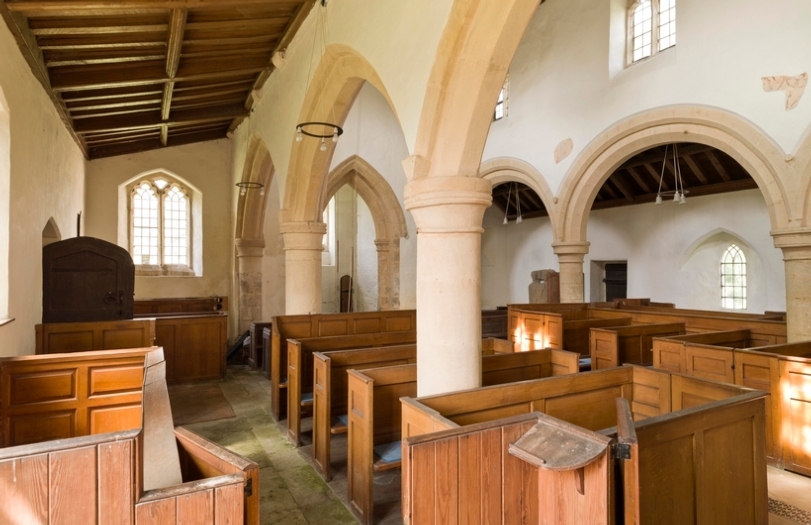Bells ring out for the re-opening of St Mary the Virgin, Ayston
The Church of St Mary the Virgin at Ayston in Rutland reopened to the public with a special event on 29 May 2015, following £370,000 of works.
Visitors were invited to come and meet the team behind recent repair and conservation works to the church, hear the peal of newly-restored medieval bells, and celebrate the reopening tea & cake.
Experts were on hand to explain more about this fascinating church, and the work of The Churches Conservation Trust, as well as offering information about how to volunteer to help us save precious historic churches for future generations.
The Church of St Mary the Virgin is set in the picturesque hamlet of Ayston, Rutland. This delightful medieval church dates from the 12th century, though much of the present fabric is from the 13th century with some later additions.
Our Volunteering Officer with responsibility for the church, Dave Adgar told the Stamford Mercury:
“It was lovely to see so many people there to celebrate this new addition to the Churches Conservation Trust, which looks after churches of national importance.We were very pleased. Everyone enjoyed a cup of tea and a piece of cake and looked around at the church. It was a successful day.”
The church has been in the care of the Churches Conservation Trust since April 2014, but has been closed recently for whilst an extensive programme of works and repairs is conducted, including:
- Reroofing of the church
- Improvements to drainage
- Masonry repairs, especially to the higher stages of the tower
- Specialist glazing work
- Wall painting conservation
- Repairs to pews, panelling and other furnishings
- Investigating and relaying floors affected by damp
- Work to make the bells safe and ringable.
The works have prepared the four medieval bells of the church to ring out once again to celebrate the reopening, hailing a former patron saint of England, Edmund, the 9th century East Anglian King. The oldest bell is inscribed ‘Ambrose’ and the other ‘Ave Rex Gentis Anglorum’, which loosely translated means ‘Hail King of the English people’ and is part of a verse which references St Edmund, who was killed in circa. 869 by the Danes for refusing to give up his faith. St Edmund was the patron saint of England until he was replaced with St George by Edward III.

